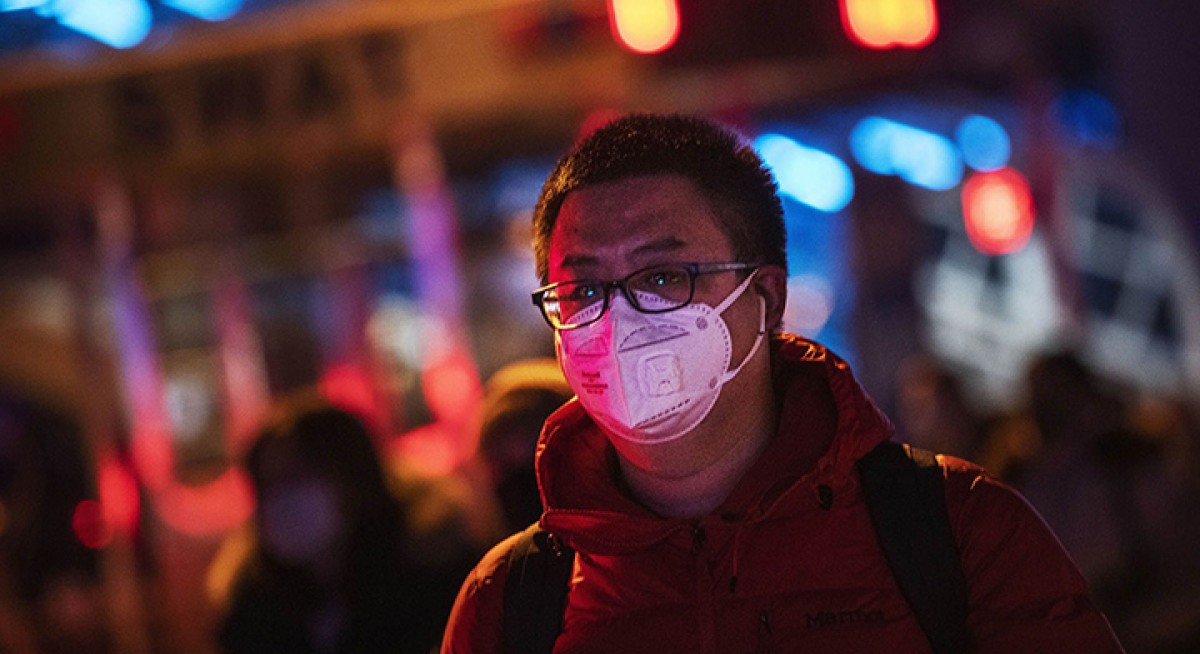“If they declare this a matter of international concern, that will impede commerce and could begin to curtail travel in and out of the country,” said William Schaffner, professor of medicine in infectious diseases at Vanderbilt University School of Medicine in Nashville, Tennessee. “I have a little bit of caution, but I’m not sure we are there yet.”
As they did during the SARS and Ebola outbreaks, health officials and scientists are tracking patients and testing samples of saliva and other fluids to determine the exact cause and severity of their ailments. They’re identifying and monitoring people with whom the patients were in contact to see if the virus is spreading easily from person to person. And they are placing restrictions on travel to try to limit the exposure to scores of new people.
The US Centers for Disease Control and Prevention expanded its inspection of airline passengers who had spent time in China to airports in Atlanta and Chicago on Tuesday, building on the 1,200 people who had been screened in California and New York over the weekend. No new cases were uncovered.
“This is an evolving situation,” said Nancy Messonnier, director of the CDC’s National Center for Immunization and Respiratory Diseases. “We do expect additional cases in the United States and globally.”
Researchers at the National Institutes of Health and the CDC are working on a test that will allow doctors to rapidly diagnose the virus in the field, said Schaffner, though Messonnier cautioned that it could take time.
They also started preliminary work on a vaccine to prevent the infection, Schaffner said. That could also take time, however. A vaccine for Ebola that was recently approved in the US took several years to develop following outbreaks in Africa in the past decade.
Six patients in China have died from the infection, which also sickened health-care workers who were caring for them.
While the vast majority of the cases are in Wuhan, a city of 11 million in the eastern inland of China, infections have been reported in Beijing, Shanghai, Tianjin, Zhejiang, Henan and Jiangxi. Patients have also been diagnosed in Thailand, Japan, South Korea and Taiwan.
The US case is a man in his 30s who was traveling in Wuhan and arrived back in the US on Jan 15, Washington State health officials said on a call with the CDC Tuesday. The resident of Snohomish, Washington, said he hadn’t spent any time at the live-animal market where the virus is believed to have originated and didn’t have contact with anyone who was sick.
The officials said the man sought care quickly after monitoring news about the virus and is in good condition, though he has been hospitalised out of an abundance of caution.
The early days of the outbreak have evoked comparisons to SARS, or severe acute respiratory syndrome, the illness that spread through airports and hospitals around the globe in 2003, killing nearly 800 people in a matter of months. Researchers now are focused on airline travel thanks to a scientific report that found a single SARS patient likely infected 22 of the 119 other travellers on his flight.
China was criticised then for initially providing limited information and denying the scope of the SARS problem, but this time Chinese researchers sequenced the genetic makeup of the novel virus and made it available to public health authorities around the world. That allowed them to compare their findings with any potential new patients.
“The speed with which this virus has been identified is testament to changes in public health in China since SARS,” said Jeremy Farrar, director of the Wellcome Trust, a public-health philanthropy. “However, we know there is more to come from this outbreak – and with travel being a huge part of the fast-approaching Chinese New Year, it is right that concern levels are at the highest level.”
Pneumonia Threat Widens
A WHO emergency declaration could include recommendations to restrict travel or trade to stop the outbreak. The agency has formed teams at its Geneva headquarters to study the virus, its spread and its symptoms and is sending a team to China to help gather information, according to David Heymann, an infectious disease researcher in the UK who advises the agency.
A significant issue in the panel’s deliberations will be the severity of infections. Some of the deaths reported so far appear to have been in sick, elderly people, which suggests the virus poses the greatest danger to people whose health is already compromised, Heymann said.
Both the Wuhan virus, known as 2019-nCoV, and SARS belong to the family of coronaviruses, so called because of their crown-like shape. Many such viruses cross the barrier between animals and humans, as the Wuhan virus appears to have done, according to Heymann, a professor of infectious disease epidemiology at the London School of Hygiene and Tropical Medicine who was formerly with the CDC. Often it takes time to determine what form the new virus will take, he said.
Despite the worries, the new virus is likely less deadly than SARS, said University of Sydney associate professor Adam Kamradt-Scott.
“It’s important to stress that this virus at the moment has been causing mild illness in the vast majority of people that have been affected,” he said on Bloomberg TV. “There’s around 10% of cases that have ended up in critical condition and there’s been deaths, but the vast majority of the 200-plus people infected have resulted in mild illness.”




